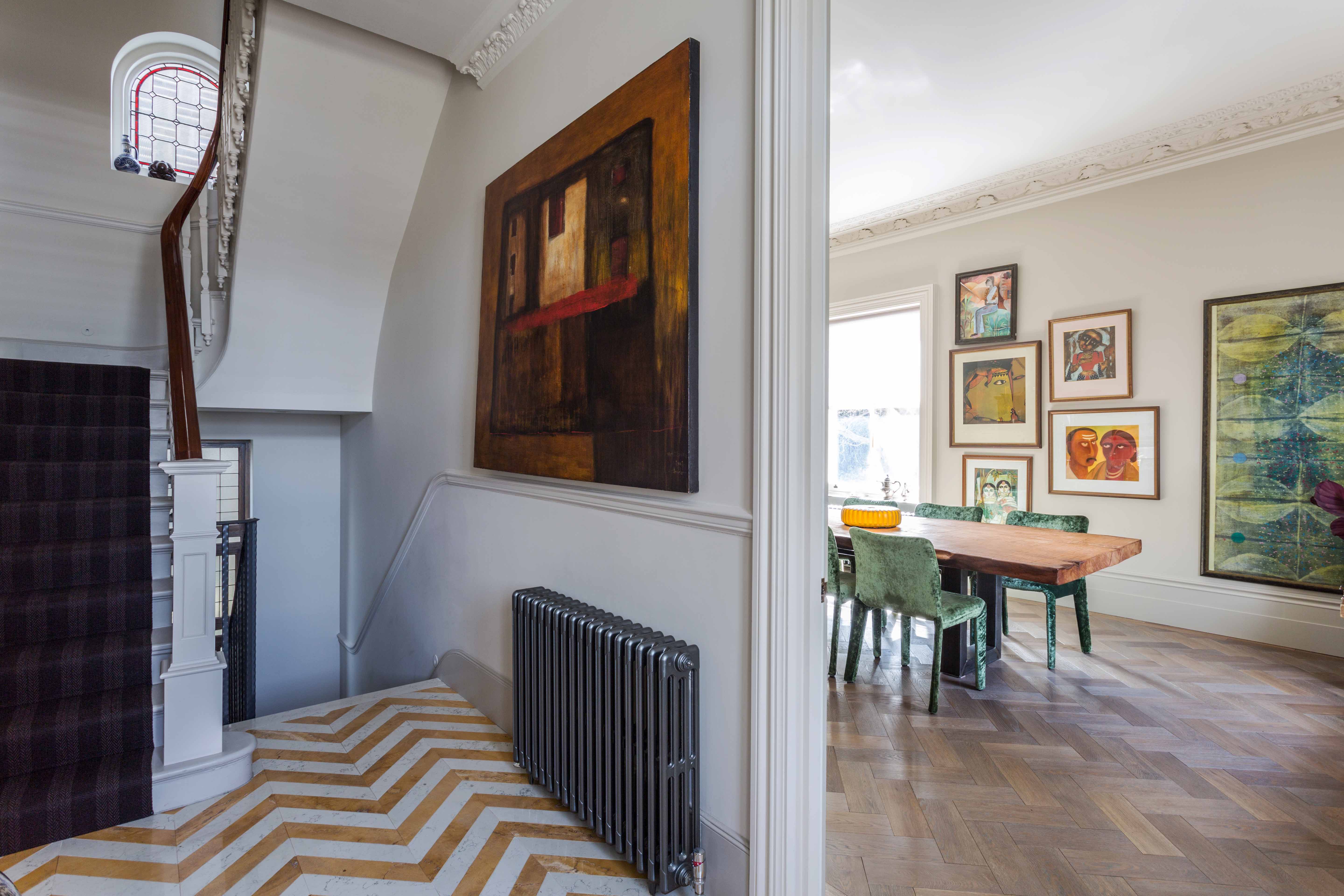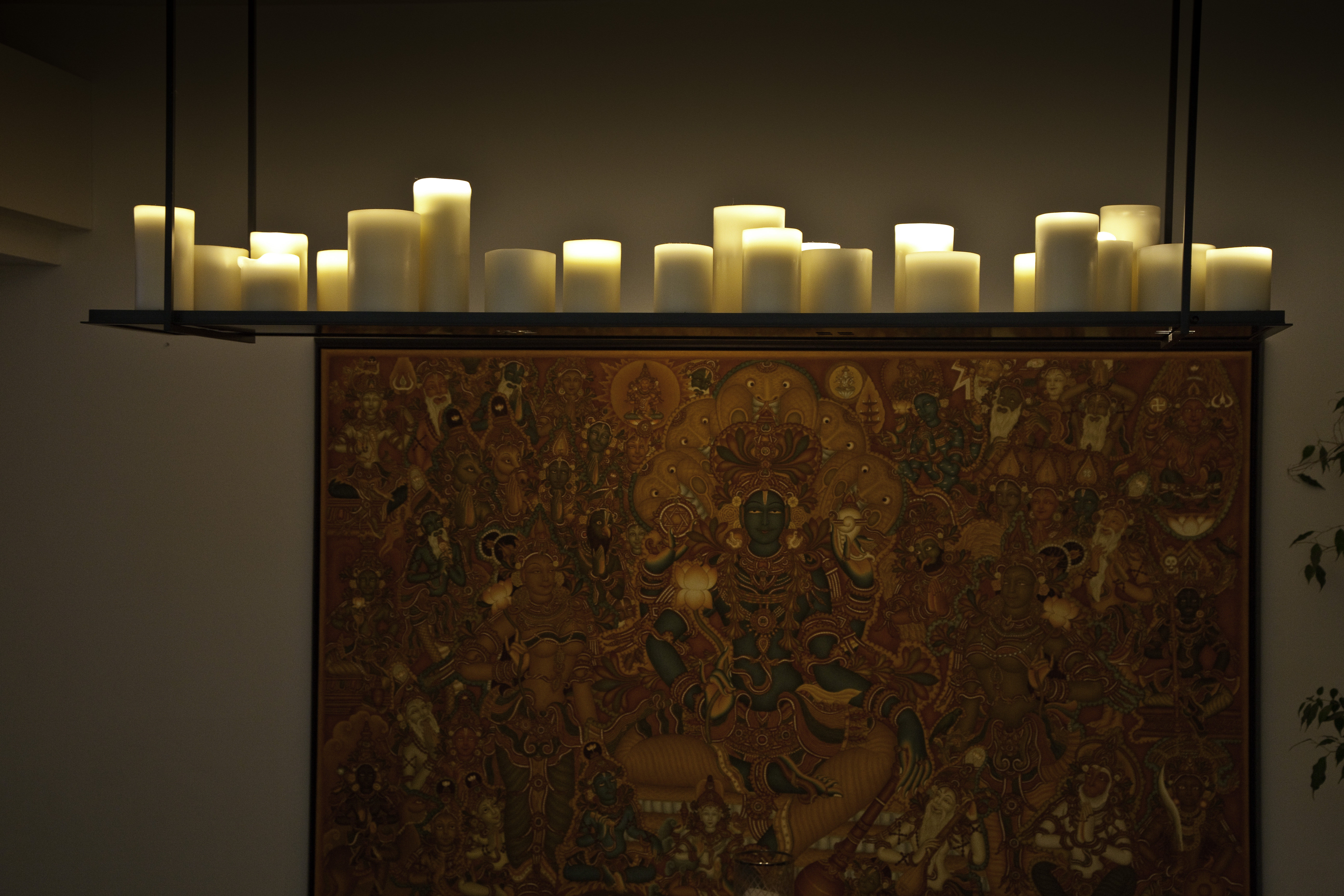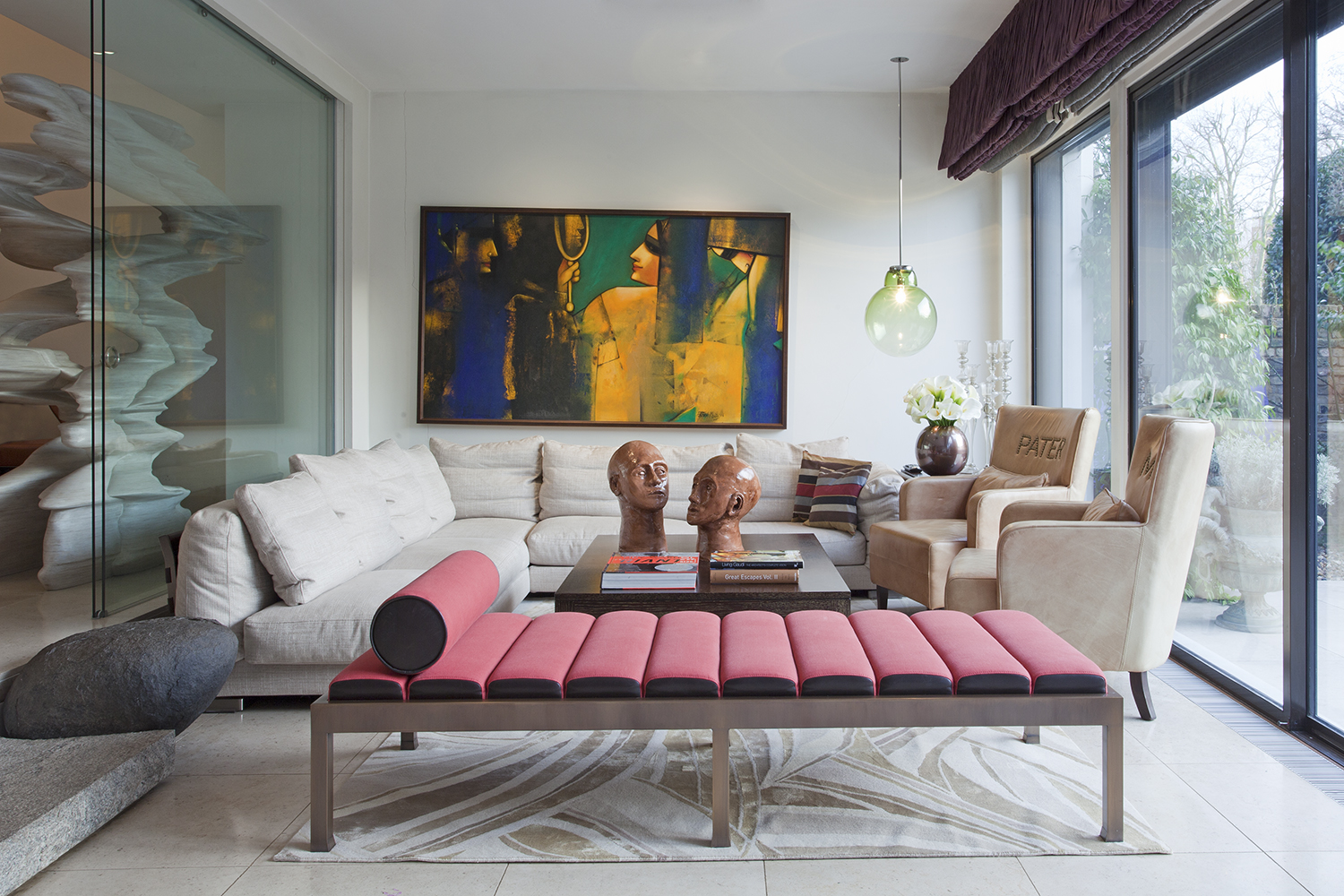Genetics, environment, diet and lifestyle choices have all been credited with the state of our physical and mental health. Recently, we hear a lot about the importance of mindfulness and regular meditation practice as key factors in restoring our wellbeing. Whilst this is all true, it’s worth remembering that a peaceful inner life is a natural consequence of a peaceful outer environment. Creating a restorative environment begins with a few simple rules that correspond to the primal need of being connected to our natural origins. Here are 7 golden interior design rules on how to create calming spaces that encourage this close-to-nature feel.
Wellness Zones
Typically, when designing a house, people tend to think about it in terms of purpose-driven spaces: kitchen for cooking, bedroom for sleeping, drawing room for hosting guests. Rarely, do we consider experience-driven zones as fundamental to the overall design. Meanwhile, defining zones for specific activities, such as meditating, reading, exercising, socialising, and relaxing, is just as important to the overall success of the project. As designers, we always try to rethink spaces in terms of physical and psychological ergonomics and redefine the natural flow of the house so it enhances creativity, flexibility and mindfulness. For instance, try to create a meditation corner – designate a corner in the quiet part of the house, stack up pillows creating a safe circle on a soft carpet, add some candles and incense; and enjoy the process of unwinding.
Air Quality
Every day, we are exposed to pollution from the water we drink, the food we eat and air we breathe. Whilst more and more of us consciously opt for organic food and filtered water in attempts to support our body’s natural detoxification process, very few of us pay attention to the importance of purifying the air we breathe, both outdoors and indoors. There is a whole variety of things you can do to improve the quality of air at home; place air purifiers in the rooms with direct exposure to busy roads, avoid artificially fragranced products and choose natural beeswax candles. You may also consider placing a salt lamp in your bedroom to cleanse, deodorize and purify air around your bed. Made from pieces of Himalayan salt crystals, salt lamps produce negative ions, which yield positive effect on indoor air with potential benefits including: balancing electromagnetic radiation, alleviating allergies and raising energy levels.
Natural Materials

Have you ever wondered what constitutes the essence of artfully designed interiors that are textural, restorative and intriguing? The secret lies in natural materials. Whether that’s stone floors, onyx counters, or timber panelling, natural materials unlock the promise of feel-good factor in interiors whilst providing the feel of refinement and durability. In our practice, we often use different combinations of Carrara marble due its alluring and endurance qualities. In some of our most innovative projects, we looked outside at the natural landscape and tried to incorporate it into the natural flow of the space; this was certainly true in our farmhouse project in India, where design of the house and the outdoors create one perfectly synchronized ecosystem.
Lighting for Wellness

Light is one of the most interesting aspects of every interior. Upon entering a room our attention often shifts to the sources of light, whether it’s a large window that looks out onto lush gardens or a velvet-clad coffee table lamp. Then, there is another source of light that we love including in our designs: light reflected in planes such as mirrors. There is really an infinite number of configurations that can bring a stunning and relaxing light combination into your interiors. Regardless of its configuration, there is one quality that is constant for all of us – access to natural light has been found to alleviate depression, regulate circadian rhythms, lower blood pressure, improve mood and keep us alert and focused, in short significantly contribute to our overall wellbeing. If one of your rooms doesn’t have natural light, try bringing light that mimics it. You may also consider investing in luminotherapy; with some of the brands available today in the market you can control colour, temperature and intensity of the light and thus control your own mood and productivity.
Biophilic Design
Now, here is a real feel-good factor – biophilic design. Even though the art of bringing the outdoor elements indoors has been in practise for centuries, it is only now that we have begun to fully understand the different qualities of plants. The secret lies in different rhythm of oxygen production and absorption that various plants perform at different times of the day and night. For instance, for a bedroom you may want to choose an Aloe Vera plant, which releases oxygen at night thus purifying the air and helping us breathe easier while we sleep. Similar qualities are displayed by Gerbera, Neem Tree, Areca Palm, Snake Plant or Orchid. On the other hand, plants such as Parlour Palm, Peace Lilies and Weeping Fig uptake carbon dioxide and release oxygen as soon as the sun rises in a process called photosynthesis. These can be incorporated into the day-time living areas to enhance your productivity and improve your mood.
Colour Schemes Tailored to Your Mood / Health Needs
Colour-therapy, also known as chromotherapy, has become a significant wellness interior design trend in recent years. You can now reimagine your interiors, and your mood, with a subtle use of colour. The inclusion of the right colour palette in design is proved to enhance cognitive performance, reduce stress or stimulate your creativity. Some holistic approaches attribute different healing energies to different colours, for instance: green supports balance and social harmony, blue stands for self-expression and calmness, orange increases creativity and productivity, red can ground us in our stamina and physical energy, purple stimulates intuition and imagination whilst yellow can inject fun, humour and lightness. Apart from psychological and physical benefits, the right use of colours can also determine the general atmosphere of your spaces as it commands such a powerful visual attention. As designers, we often use subdued colour palettes – warm greys, muted greens and blues – to create a sense of calm, serenity and positivity.
Sleep Zone
Last but not least, sleep. This miraculous yet simple cure gives our bodies a chance to heal physically and rebalance emotionally. We all have access to this powerful practise daily yet so few of us embrace it in a healthy and beneficial way. Everyday electronic appliances, such as mobile phones, computers and tablets can cause an overflow of electromagnetic radiation around us and thus significantly impact the quality of our sleep. To counter this invisible, yet long-term effect on our bodies, we can regularly ventilate our bedroom and consider investing in a salt lamp, which deactivates the positive ions emitted by common electronics. Another key element of a restorative sleep is melatonin production. This potent hormone, released by the pineal gland, can determine how quickly and how deeply we fall asleep. Studies conducted in Antarctica demonstrated that excessive light can significantly reduce the production of melatonin, which in turn affects our body’s natural rejuvenation and detoxification ability. That is why when designing bedrooms, we tend to opt for blackout curtains, which despite appearances, can be as light and aesthetically delightful as more conventional fabrics. With a well-ventilated and dark bedroom, the last aspect to add is an ergonomic mattress and natural fabric linens to help you wake up refreshed every morning.
Follow us here and subscribe here for all the latest news on how you can keep Thriving.
Stay up to date or catch-up on all our podcasts with Arianna Huffington here.


